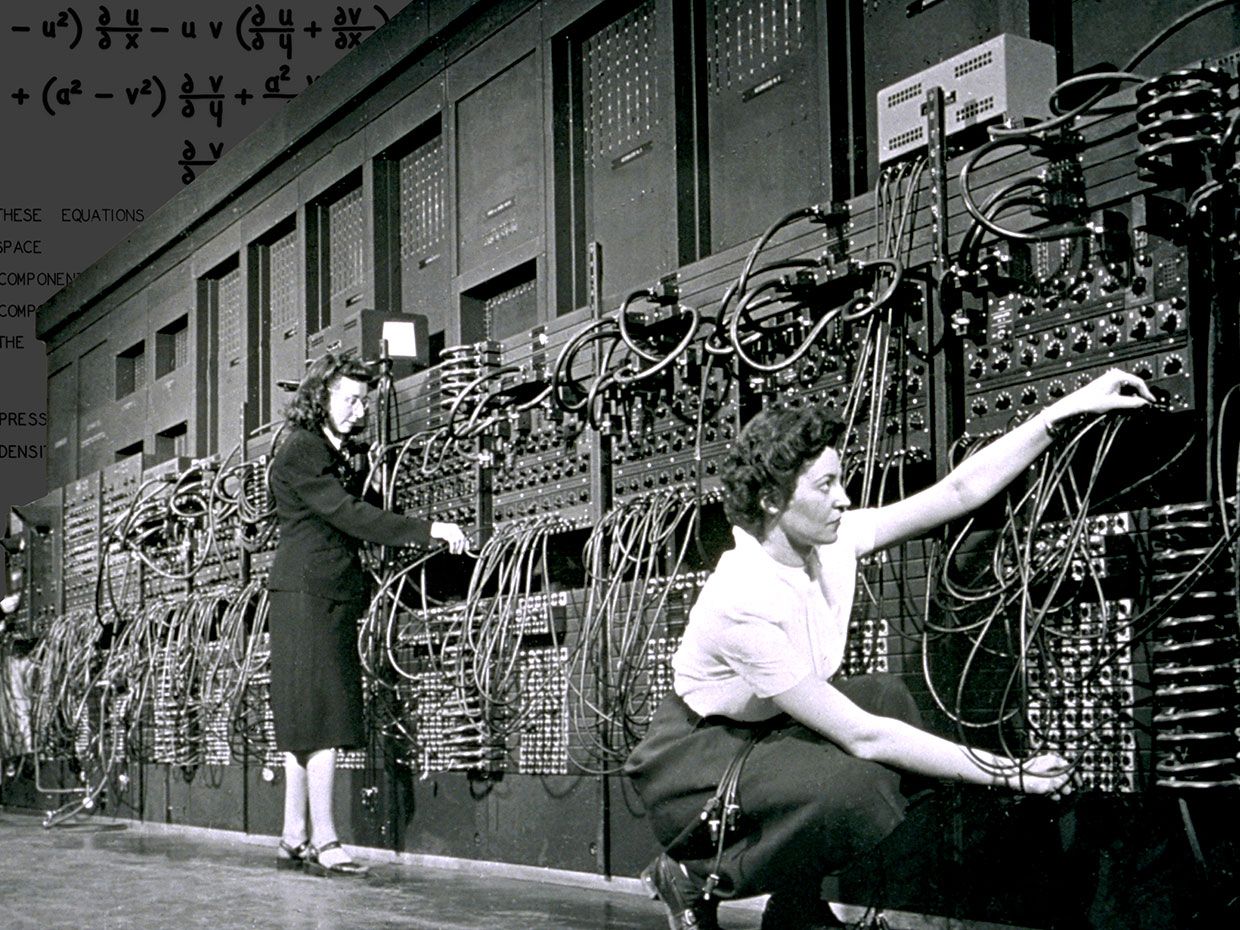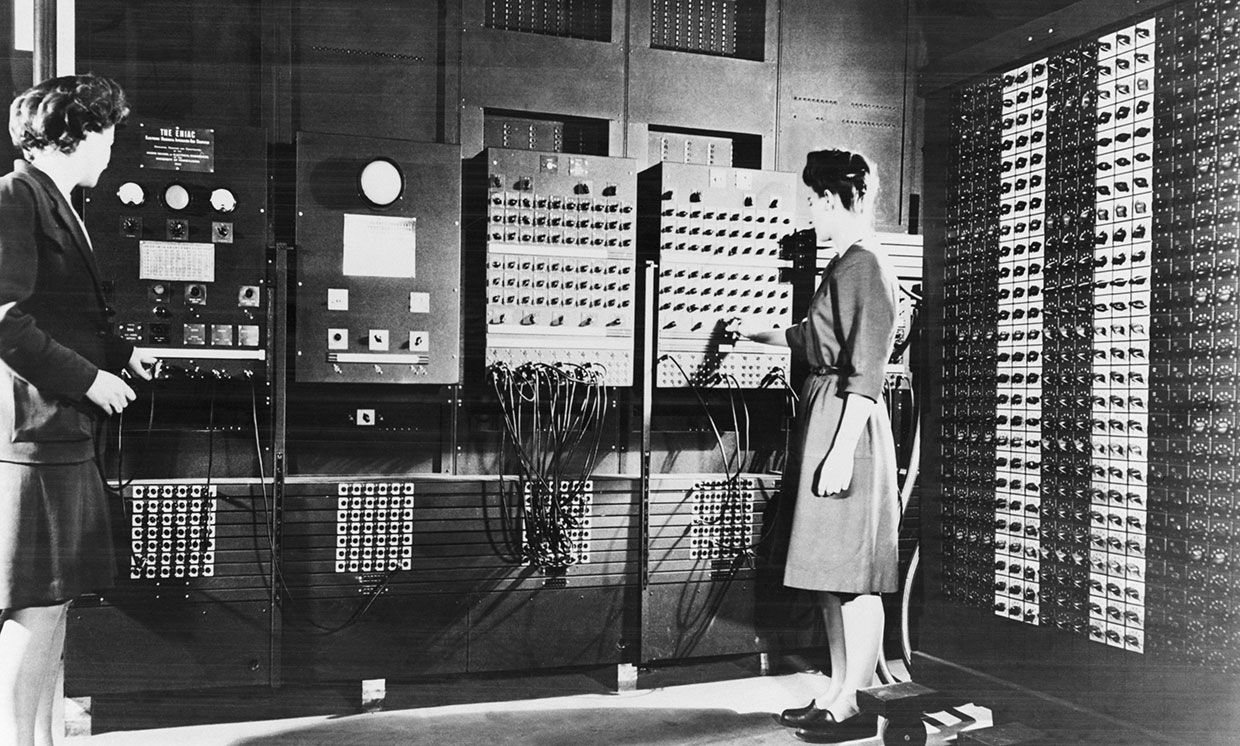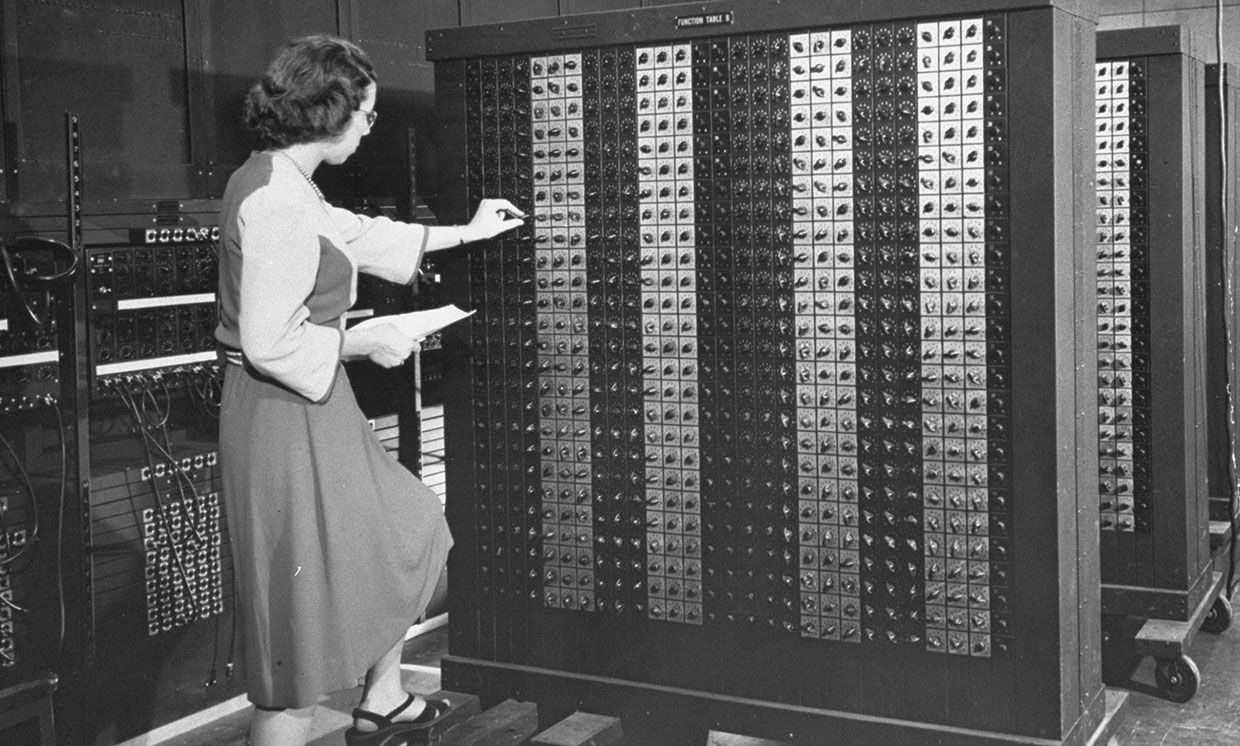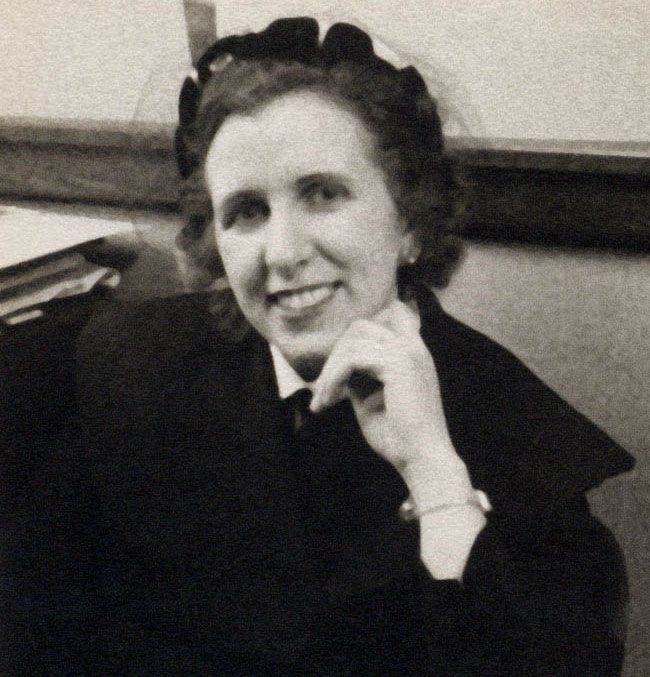Untold History of AI: Invisible Women Programmed America's First Electronic Computer | US computer Academy
he history of AI is often told as the story of machines getting smarter over time. What’s lost is the human element in the narrative, how intelligent machines are designed, trained, and powered by human minds and bodies.
 In this six-part series, we explore that human history of AI—how innovators, thinkers, workers, and sometimes hucksters have created algorithms that can replicate human thought and behavior (or at least appear to). While it can be exciting to be swept up by the idea of super-intelligent computers that have no need for human input, the true history of smart machines shows that our AI is only as good as we are.
In this six-part series, we explore that human history of AI—how innovators, thinkers, workers, and sometimes hucksters have created algorithms that can replicate human thought and behavior (or at least appear to). While it can be exciting to be swept up by the idea of super-intelligent computers that have no need for human input, the true history of smart machines shows that our AI is only as good as we are.
Part 2: The Invisible Woman Programmers of ENIAC
On 14 February 1946, journalists gathered at the Moore School of Engineering at the University of Pennsylvania to witness a public demonstration of one of the world’s first general-purpose electronic digital computers: the Electronic Numerical Integrator and Computer (ENIAC).
Arthur Burks, a mathematician and senior engineer on the ENIAC team, was in charge of showing off the machine’s capabilities. He first had the computer add 5,000 numbers together, a task it completed in 1 second. Then he demonstrated that the machine could compute a bomb trajectory in less time than a shell would take to fly from gun to target.
The reporters were thoroughly impressed. As far as they could tell, all Burks had to do was press a button and the machine would whir into life, computing in mere moments what would have previously taken a number of days for humans.
What the journalists didn’t know, or what was concealed during the demonstration, was that behind the computer's apparent intelligence was the arduous and ground-breaking programming work of a team of six women, who themselves had previously worked as “computers.”

The plan to build a computing machine that could calculate bomb trajectories took shape in the early years of World War II. The Moore School of Engineering was working with the Ballistic Research Laboratory (BRL), where a team of 100 “human computers” were trained to hand-calculate firing tables for artillery shells.
This task required a high level of mathematical skill, including the capacity to solve nonlinear differential equations and use differential analyzers and slide rules. Yet computing was considered clerical work, a task too tedious for the male engineers to engage in. So BRL hired women—who mostly had university degrees and displayed high mathematical aptitude—to handle the job.
As the war progressed, the capacity to predict the flight path of bombs became more integral to military strategy, and the BRL came under increasing pressure to churn out results.
In 1942, the physicist John Mauchly wrote a memo proposing the construction of a programmable, general-purpose “electronic calculator” that could automate the computing process. By June 1943, Mauchly, along with electrical engineer J. Presper Eckert, received funding to build ENIAC.

The purpose of the electronic computer was to replace the BRL’s hundreds of human computers and make the calculating process faster and more efficient. However, Mauchly and Eckert realized that their new machine would need to be programmed via punch cards in order to calculate trajectories, a technique used by IBM to program other machines for decades.
Adele and Herman Goldstine, a married couple who led the human computing operations at BRL, suggested that the most adept mathematical minds from their group should carry out the task. Together they selected six women—Kathleen McNulty, Frances Bilas, Betty Jean Jennings, Ruth Lichterman, Elizabeth Snyder, and Marlyn Wescoff—to be promoted from human computers to machine operators.

Their first task was to familiarize themselves with ENIAC, inside and out. They studied the machine’s blueprints in order to understand its circuitry, logic, and physical structure. There was a lot to learn: The 30-ton behemoth covered about 140 square meters (1,500 square feet), used over 17,000 vacuum tubes, 70,000 resistors, 10,000 capacitors, 1,500 relays, and 6,000 manual switches. The team of six operators were in charge of configuring and wiring the machine to perform specific computations, handling the punch card equipment, and debugging its operations. This sometimes required the operators to crawl inside the machine to replace a faulty vacuum tube or wire.
ENIAC was not finished in time to compute bomb trajectories during the war. But shortly thereafter, it was enlisted by John von Neumann to performnuclear fusion calculations. This required the use of over 1 million punch cards. Physicists from Los Alamos relied on the programming skill of the operators, who alone knew how to handle so many operations.

Yet the contribution of the women programmers received little acknowledgement or acclaim. This was partly because programming the machine was still closely associated with human computation, and was therefore considered to be a type of “subprofessional” women’s work. The lead engineers and physicists were focused on designing and building hardware, which they considered more vital to the future of computing.
For this reason, when ENIAC was finally presented to the press in 1946, the six women operators remained hidden from view. It was the dawn of the Cold War, and the American military was keen to demonstrate its technological prowess. By representing ENIAC as an autonomous, intelligent machine, the engineers projected a type of foreboding technological dominance, while concealing the human labor involved.
This public relations tactic worked, and it influenced media coverage of computing machinery in the decades to come. In the news stories about the ENIAC that spread across the globe, the machine took center stage, referredto as an “electronic brain,” a “wizard,” and a “man-made robot brain.”
Little mention was made of the painstaking, gritty work of the six women operators, who had crawled through the machine’s wires and vacuum tubes to enable the so-called acts of machine intelligence.
This is the second installment of

No comments:
Post a Comment
saqlainm329@gmail.com